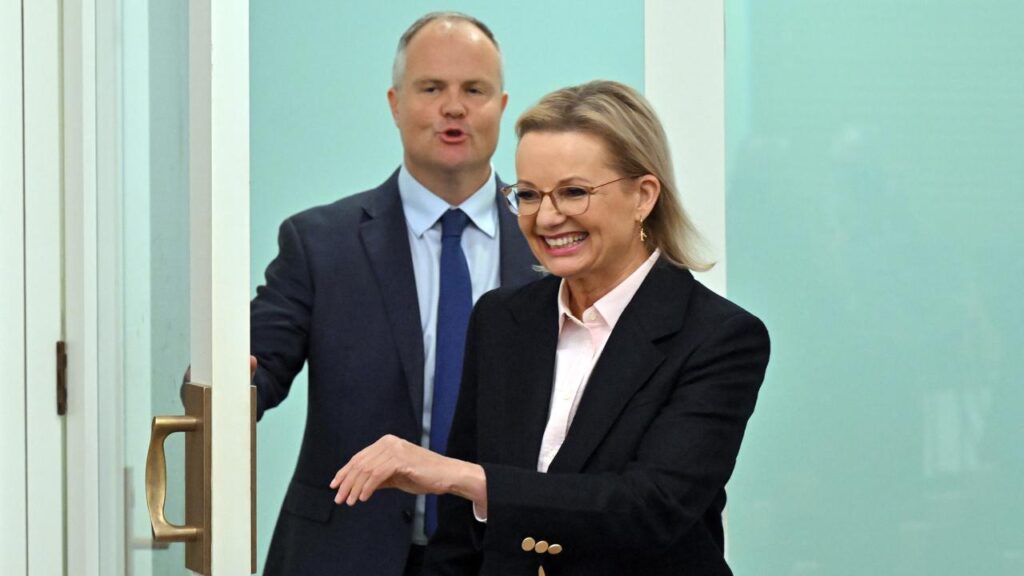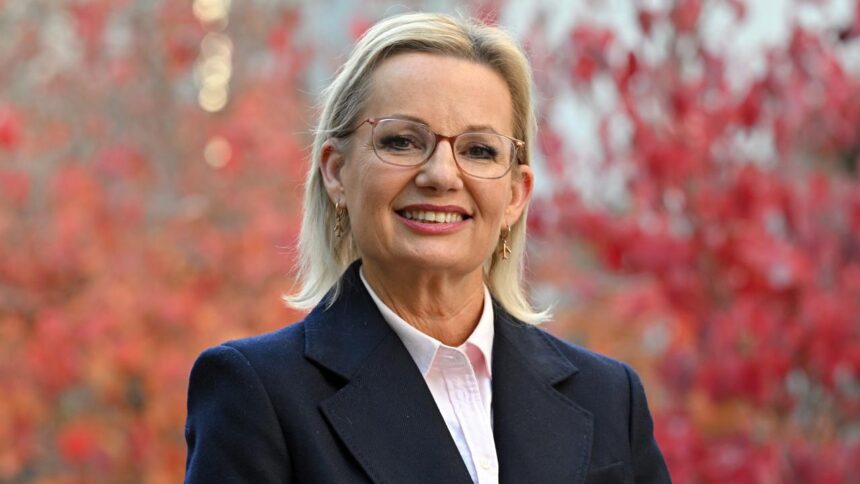Sussan Ley Makes History as First Female Liberal Leader
Sussan Ley has made history by becoming the first female leader of the Liberal Party in Australia. Her appointment marks a significant milestone in the political landscape. However, the context of her rise to leadership suggests more than just a celebration of gender progress. It has sparked a conversation around a critical concept known as the “glass cliff.”
The Timing of Ley’s Leadership Raises Questions
The timing of Ms Ley’s appointment follows a devastating election loss for the Liberal Party, leading many to question whether she’s being set up to fail. Gender equality experts have weighed in, raising concerns about the potential pitfalls she could face.
Understanding the ‘Glass Cliff’ Phenomenon
The term “glass cliff” was coined in 2005 by Australian National University gender expert Michelle Ryan and her research partner Alex Haslam. It describes a scenario where women or minority leaders are more likely to be elevated to leadership roles during periods of crisis. These are situations where the likelihood of failure is significantly higher, putting these leaders in precarious positions from the outset.
According to Professor Ryan, “The fact that they’ve come out of an unprecedented loss at an election, and this is the first time a woman is leading – I don’t think those two things are unconnected.”
Sussan Ley: Qualified Leader Amidst Political Turmoil
Despite the challenging circumstances, there’s no questioning Ms Ley’s qualifications. With over two decades of experience in parliament, she is seen by many as “incredibly qualified” for the leadership role.
“But the timing definitely suggests that it’s somewhat of a glass cliff,” Professor Ryan noted. The concern is not about her capability but about the context and timing of her rise.
Why Timing Matters in Political Leadership
Ms Ley’s appointment comes on the heels of a catastrophic election for the Liberal Party. The coalition was decimated, leaving a narrow pool of candidates willing to step forward.
Potential leaders like Dan Tehan and Andrew Hastie ruled themselves out early, leaving room for Ms Ley’s historic win. This narrowing of options might have inadvertently reinforced the conditions of a glass cliff.
The Weight of Expectations and Party Pressures
As Professor Ryan explained, “The Liberal Party is under great scrutiny – there’s a lot of agitation.”

High Stakes in a Challenging Political Environment
Given the state of the party, any leader stepping into this role was unlikely to become prime minister soon. The stakes are high, and the environment is fraught with uncertainty.
The Global Pattern of Glass Cliff Leadership
This phenomenon isn’t exclusive to Australia. Conservative political parties worldwide have exhibited similar patterns.
For example, in the UK, Theresa May took over leadership after the Brexit vote, only to face immense backlash and resign two years later. “She’d done all the hard work of the negotiations with the EU, and then we had Boris Johnson take over,” said Professor Ryan.
Ms Ley Responds: Redefining the Narrative
Sussan Ley has addressed the glass cliff concept head-on. When asked, she dismissed the notion that her leadership was symbolic of this trend.
She emphasized her intent to lead with purpose and connect more deeply with women across Australia. Her focus, she says, is on listening and building stronger female representation in politics.
Gender Representation and Political Recovery
Professor Ryan acknowledged this approach. She pointed out that Ms Ley’s election reflects more than a crisis response. It’s also a strategic move to address the party’s dwindling support among women.
“The glass cliff makes it harder to succeed, but that doesn’t mean success is not possible,” she said. The implication is that while the challenge is real, the opportunity for impact is equally powerful.
A Leadership Moment with National Impact
Sussan Ley’s rise to leadership is more than just a historic first for the Liberal Party. It’s a case study in the intersection of gender, politics, and crisis management.
As the nation watches her next moves, the story of her leadership could reshape how we understand political opportunity and gender equity in Australia.
Whether or not she is standing on a glass cliff, Ms Ley has already made her mark. Her journey forward will test not only her political skills but the resilience of the system she now leads.




